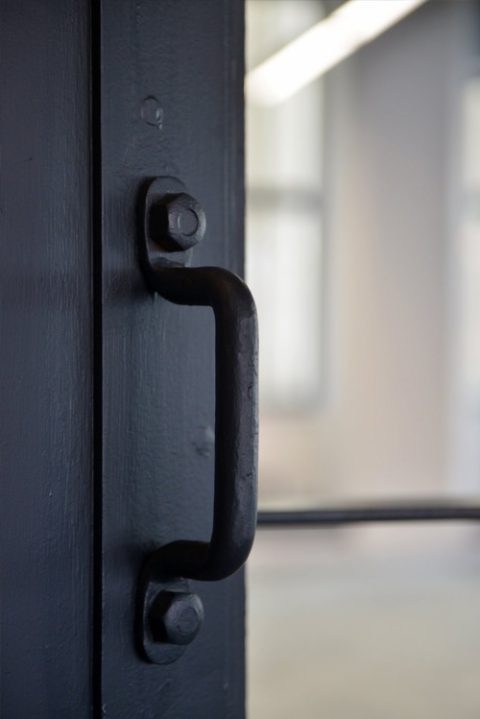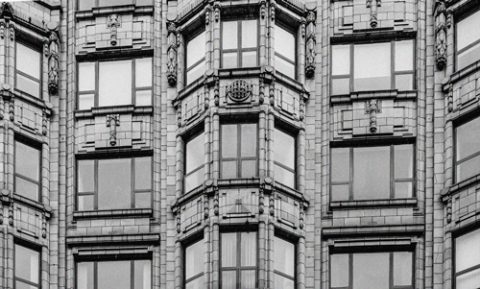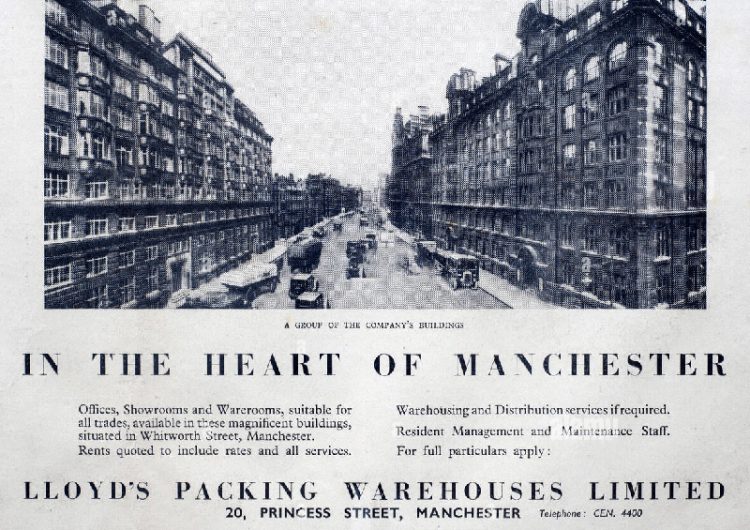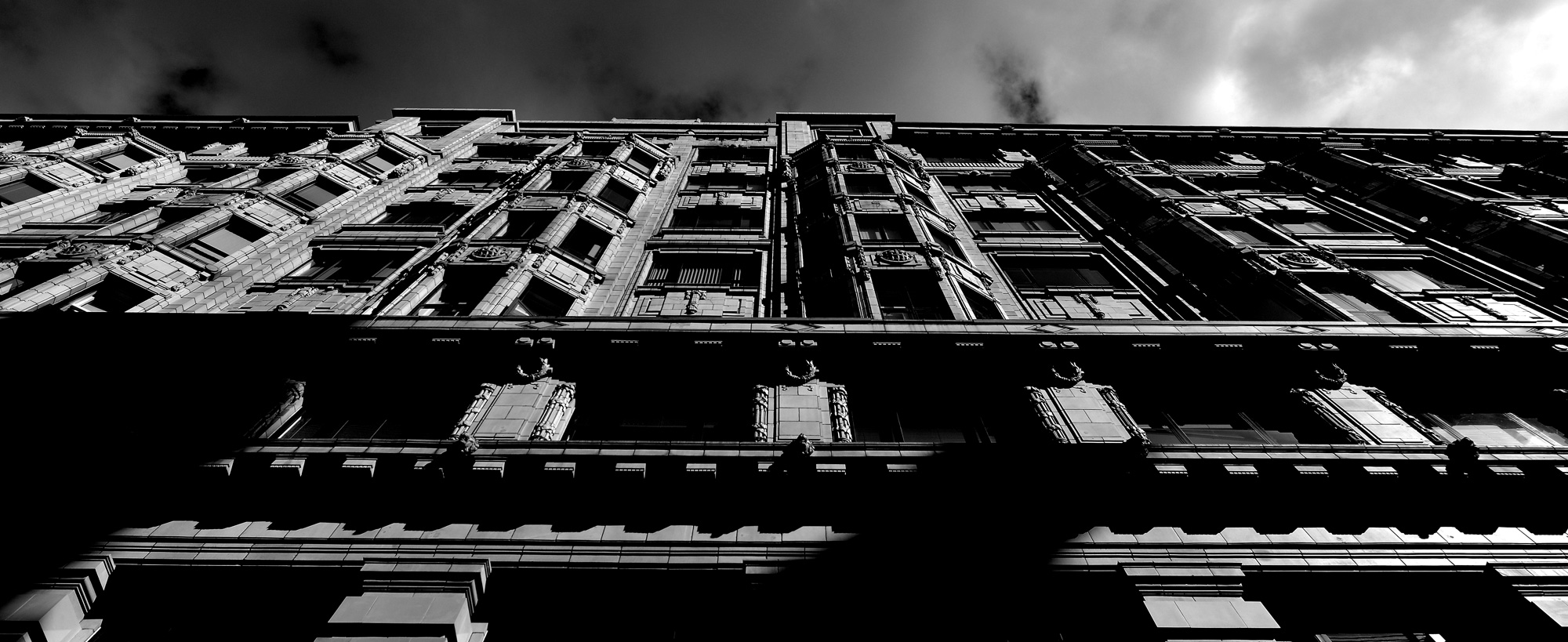
Bridgewater House; a jewel in Manchester’s proud past.
The building was designed to be 134 ft tall, 240 ft wide and 14 storeys. From excavations to final completion the building took 11 months in total and was noted as being the biggest packing warehouse in the world.
1912/13
1912/13
Construction
Bridgewater House is built around a steel frame with sandstone ashlar cladding and white glazed terracotta in a large rectangular plan, with a loading bay at the rear. The building has 11 floors, a basement, sub-basement and 19 bays. Above the doorways are profile medallions of the Duke of Bridgewater.
The Buildings of England series state that “Fairhurst’s design revolutionised the business of loading and unloading goods and twenty-six lorries could be dealt with simultaneously using a drive-through system”.
1912 Elevation to Whitworth Street
Drawn by Harry S. Fairhurst (not entirely as built), showing the two original main entrances forming No. 58 (left), and No. 60 (right).

April 1912 Block Plan
This plan, drawn by architect Harry S. Fairhurst, shows the initial block plan of the new Bridgewater House, showing the line of Atwood Street meeting with the remainder of the street to create a new building line and access to the canal.
1930s
1930s
Packing and Shipping
Lloyd’s Packing Warehouse Ltd
The building was constructed for Lloyd’s Packing Warehouses Ltd and, like many warehouses, was built to a common design with steps to a raised ground floor with showroom and offices.
The first floor contained more offices, waiting rooms for clients, and sample and pattern rooms.
The working areas above had large windows to allow in natural light. Orders were packed there and sent to the basement on hoists powered by Manchester’s hydraulic power system.
Lloyd’s Packing Warehouses Limited was founded in 1896 when three established packers for the Manchester export trade joined forces. The company was created following observations in the existing way in which packers worked in the city.
1939/45
1939/45
World War II
1939
The basement of the building was converted for use as a large public air raid shelter.
31st August 1940
The southern side of the building suffered a direct hit from a high explosive bomb on the 31st August 1940, which caused external and internal damage to the upper floors.
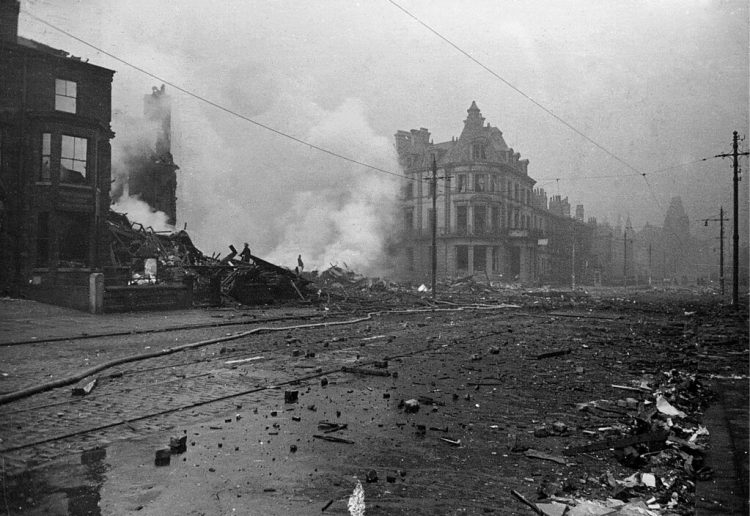
1940-41
This map was produced in 1940-41 using the 1932 OS map in order to mark the location of enemy bombing during the Second World War. The map shows that the southern side of the building suffered a direct hit from a high explosive bomb on the 31st August 1940.
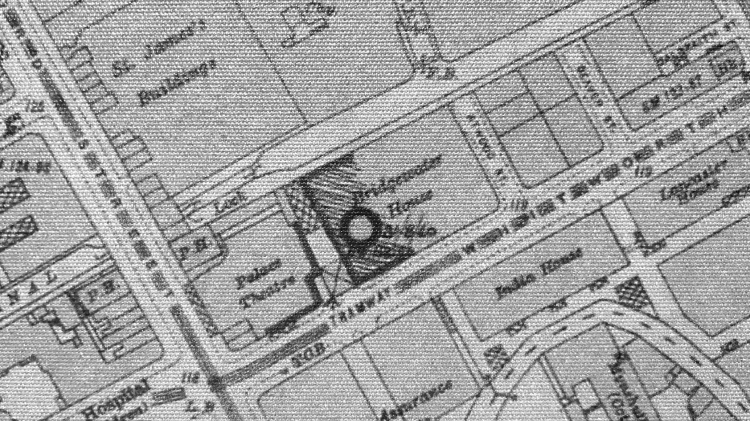
1980s
1980s
Family Recognition
In the 1980s Harry S. Fairhurst’s son P.G. Fairhurst, stressed the importance of the building to the early reputation of his father’s architectural practice, which was a revolution in the way cotton and other goods were loaded and unloaded. Lorries would enter the loading doors in Atwood Street and drive straight through the building leaving through the loading doors adjacent to the rear of the Palace Theatre on Whitworth Street.
Windows were designed to allow for the maximum amount of daylight into the warehouse spaces, through large metal-framed windows. This was a fenestration arrangement which was highly advanced for the period in which it was designed.
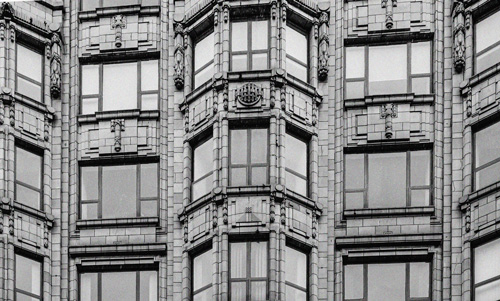
2003
2003
Renovation
In 2017 Bridgewater House was provided with an upgraded reception area, as well as grade A office space.
APAM invested £1m into the refurbishment of the reception area, renovating the space to include a new business lounge with a coffee shop, meeting pods, workspaces and Wi-Fi.
The project brief was to create a hub for the building’s occupiers, using cutting-edge design whilst paying homage to the buildings industrial history.
The hub was designed to provide a business lounge for the buildings occupiers including meeting areas, presentation pods with IT connections, presentation screens, break-out space and an 80-seater cafe with workstations.
The unique design was achieved by creating an industrial-style interior, exposing the original architectural features, including the original brickwork, cast-iron columns and historic lift shafts, and incorporating new technologies.
2017
2017
Renovation
In 2017 Bridgewater House was provided with an upgraded reception area, as well as grade A office space.
APAM invested £1m into the refurbishment of the reception area, renovating the space to include a new business lounge with a coffee shop, meeting pods, workspaces and Wi-Fi.
The project brief was to create a hub for the building’s occupiers, using cutting-edge design whilst paying homage to the buildings industrial history.
The hub was designed to provide a business lounge for the buildings occupiers including meeting areas, presentation pods with IT connections, presentation screens, break-out space and an 80-seater cafe with workstations.
The unique design was achieved by creating an industrial-style interior, exposing the original architectural features, including the original brickwork, cast-iron columns and historic lift shafts, and incorporating new technologies.
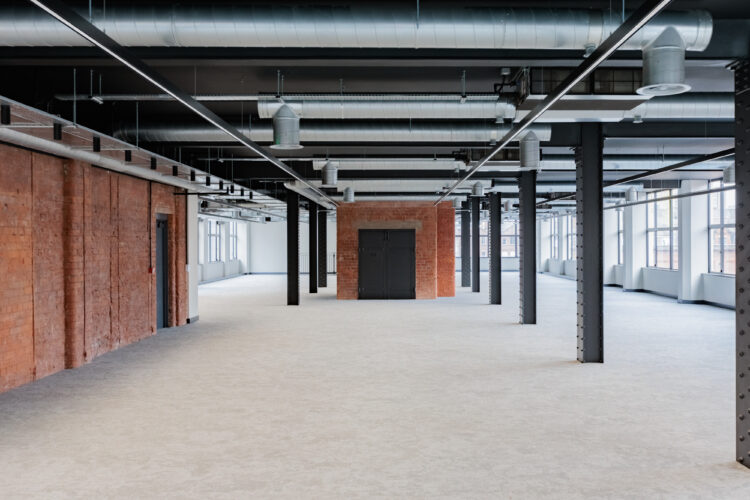
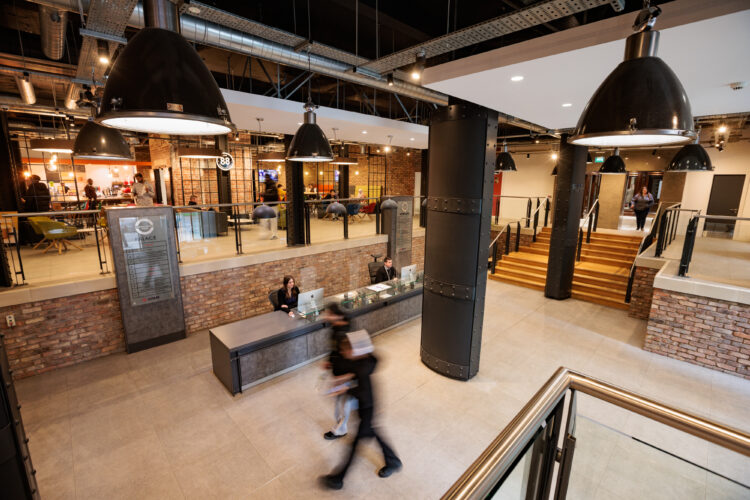
Today
Today
Conservation
Today Bridgewater House is an important component of the Whitworth Street Conservation Area and forms a group with the Refuge Assurance building, India House and Lancaster House. They reflect the historical importance of the textile industry.
Bridgewater House retains many characteristic, operational features, including the cantilevered iron structure of the overhanging loading bay, reflecting its important original relationship with the canal. Beautiful original internal features such as decorative tiles still exist in corridor and lobby areas.
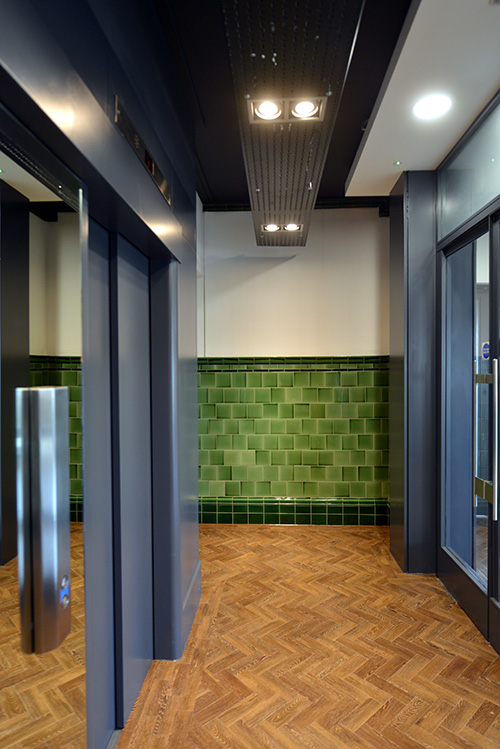

1,000 - 51,000 sq ft of industrious office space
BRIDGEWATER HOUSE; A NATURAL BLEND OF MATERIALS ELEGANTLY FUSING THE THEN AND NOW.

